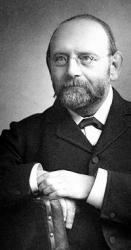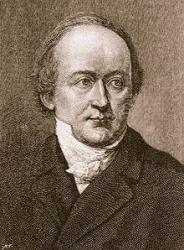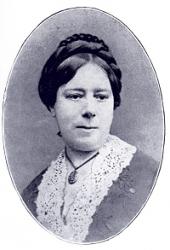Planning worship?
Check out our sister site, ZeteoSearch.org,
for 20+ additional resources related to your search.
- |
User Links
Person Results
Philippe Goibaud Du Bois
1626 - 1694 Person Name: Philippe Goibaud Dubois, 1624-1696 Composer of "CHRISTE FONS JUGIS" in The Hymn Book of the Anglican Church of Canada and the United Church of Canada
Philippe Goibaud Du Bois
Joseph Barnby

1838 - 1896 Composer of "HOREB" in The Hymnal Joseph Barnby (b. York, England, 1838; d. London, England, 1896) An accomplished and popular choral director in England, Barnby showed his musical genius early: he was an organist and choirmaster at the age of twelve. He became organist at St. Andrews, Wells Street, London, where he developed an outstanding choral program (at times nicknamed "the Sunday Opera"). Barnby introduced annual performances of J. S. Bach's St. John Passion in St. Anne's, Soho, and directed the first performance in an English church of the St. Matthew Passion. He was also active in regional music festivals, conducted the Royal Choral Society, and composed and edited music (mainly for Novello and Company). In 1892 he was knighted by Queen Victoria. His compositions include many anthems and service music for the Anglican liturgy, as well as 246 hymn tunes (published posthumously in 1897). He edited four hymnals, including The Hymnary (1872) and The Congregational Sunday School Hymnal (1891), and coedited The Cathedral Psalter (1873).
Bert Polman
Joseph Barnby
Christian Karl Josias, Freiherr von Bunsen

1791 - 1860 Person Name: C. J. B. Bunsen Translator of "Now God be with us, for the night is closing" in Select Songs No. 2 Bunsen, Christian Carl Josias, Baron, Prussian Minister at Rome, 1823-1838; at Berne, 1839-1841; Ambassador to England, 1841-1854; was born at Corbach in Waldeck, 25th August, 1791; died at Bonn, November 28th, 1860. Having gained high honours in the Universities of Marburg and Gottingen, he began life as an assistant master in the Gymnasium of Gottingen, but soon quitted that post to prosecute the enquiries which he felt to be the true aim of his life, and for which he had already, at the age of 24, conceived the idea of a comprehensive plan of philological and historical research, culminating in a synthesis of philology, history and philosophy, with the application of that synthesis to religious and civil legislation. To the accomplishment of this youthful scheme it may truly be said that his whole life was dedicated; for though employed in the diplomatic service of his country fur 37 years, he unremittingly carried on his labours as a scholar, and always regarded public questions under the aspect of their bearing on the moral and religious welfare of man, governing his publications by his convictions on these points, in the pursuit of the aims thus indicated, he studied successively the languages and antiquities of the Germanic, Indo-Peraie, Semitic, and Egyptian peoples, the fruit of his investigations being enbodied in his:—
(1) "Description of Borne," 1819; (2) "Egypt's Place in the World's History," 1848; (3) "Hippolytus and his Age," 1852; (4) "Outlines of a Philosophy of Cniversal History," 1854; (5) "Signs of the Times," 1855; (6) "God in History," 1857-58; and lastly his (8) "Bibel-Werk," or Critical Text of the Bible, with com¬mentaries, which he did not live to complete.
The titles of these writings will indicate the fact that the studies and employments which aver came nearest to his heart lay in the direction of theology, believing as he did that the revivification of practical Christianity was the "essential condition of universal well-being"—of "the salvation of Church and State."
” It is my conviction," he says (1821, set. 29), "that all communion essentially consists in a common belief in the facts of the redemption of the human race through Christ; but when ... a congregation is to be thereby formed, three points must be considered: first, agreement by means of a theological expression of the points of faith; secondly, congregational discipline; thirdly, a common form of worship."
It was for the third of these that Bunsen felt himself especially called to labour; writing in 1821:—
"When I thought myself in my late illness on the brink of eternity ... I enquired what I ought to make my calling if God should prolong my life . . . and upon my theological labours I rested as the quarter in which my calling was to be sought. My thoughts were bent principally on my liturgical enquiries."
In 1822 he composed the Liturgy still in use at the German Chapel on the Capitol, followed in 1833 by his Versuch eines allgemeinen evangelischen Gesang- und Gebeibuclis, containing 934 Hymns and 350 prayers. In Germany the tendency of the centuries that had elapsed since the great age of hymn-writers had been to adapt their language and modify their thoughts in accordance with modern taste till, as Bunsen says, "Almost everywhere do weo find the admirable ancient hymns driven out of use by modern ones which are feeble and spiritless." Luther's asperities of diction and metre had to be softened down, in order to fit them to be sung in an age rejecting nearly all but iambic or trochaic verses, and moreover each government, sect, or school of opinion, thought them¬selves justified in remodelling the older National Hymnody according to their own ideas, till at length little remained of their pristine rugged glory, they were defaced past recognition.
Bunsen's object in his Versuch was to provide materials for a national hymn-book for the whole of Protestant Germany, irrespective of territorial, ecclesiastical or sectarian divisions. To this end he sought out the finest German hymns, and his selection includes a large pro¬portion of the best hymns in the language with no limitations of party. The success of Bunsen's work in Germany at large was attested by the rapid sale of an enormous edition, but when a reprint was called for he published instead a smaller edition of 440 hymns. The motive was his patriotic ambition to produce a handy volume like the English Book of Common Prayer, and he fondly hoped that when the volume was printed at the Rauhe Haus in 1846, it would speedily supplant the locally introduced Gesangbücher of the 18th and 19th centuries. This hymn-book has in fact been adopted for public worship by some individual congregations in Germany, and by many scattered throughout Australia, New Zealand, &c, but it never became a National Hymn-book. Bunsen was among the first to go back to the authors and their original texts, and the abridgments and alterations he made were done with tact and circumspection. Perhaps nothing, however, can better prove the high estimation in which Bunsen's first "epoch-making" work is held than the fact that his work of 1833 has been republished as:—
Allgemeines Eoangelisches Gesang-und-Gebet-bueh turn, Kirchen-und-Hausgebrauch: In vollig neuer Bearleitung von Albert Fischer. Gotha, F. A. Perthes, 1881.
and that this republication, or rather recast, was conducted by the first German hymnologist living. A parallel case of inability to command universal acceptance for public use on the one hand, and of renovating influence on national hymnody on the other, is that of Lord Selborne's Book of Praise. Before the date of its publication in 1862, little or no regard was paid to original texts. Since then, however, few collections have been published in Gt. Britain and America in which the principle laid down by him has not been followed with more or less fidelity.
But it is not Germany alone, or even perhaps most widely, that has profited by Bunsen's zeal for hymnology: Through the medium of translations such as those of Miss Catherine Winkworth, Mr. Massie, Miss Cox, and others, many German hymns are as familiar to English and American readers as to Germans. The Lyra Germanica (of which more than 30,000 copies have been sold in England and probably as many more in America; is a household book wherever English is spoken, and few, if any, collections of hymns that have appeared in England or America since its publication have been compiled without some hymns taken from the Lyra.
But no sketch of Bunsen would be complete without mentioning that he himself had no mean talent as a writer of sacred poems. Some of these pieces are given in his Biography, and one is noted under "O lux beata Trinitas." Perhaps the whole scope of Bunsen's life-work can scarcely be summed up better than in his own words written in 1817 [aet. 26].
"To study and then to set forth the consciousness of God in the mind of man, and that which, in and through that consciousness, he has accomplished, especially in language and religion." [Susanna Winkworth]
-- John Julian, Dictionary of Hymnology (1907)
Christian Karl Josias, Freiherr von Bunsen
Healey Willan
1880 - 1968 Arranger (Faux Bourdon) of "CHRISTE SANCTORUM" in The Hymnary Healey Willan (b. Balham, London, England, October 12, 1880; d. Toronto, Ontario, February 16, 1968), theory teacher, composer and organist, was born into an Anglo-Catholic family in England and served several churches in the London area, becoming known especially for his adaptations of Gregorian chant to be able to be sung in English translation. In 1913 he moved to Canada where he led the theory department and was organist at the Toronto Conservatory of Music. He also was organist at St. Paul’s, Canada’s largest Anglican church, and after 1921 at the smaller Church of St. Mary Magdalene. By invitation, he composed an anthem for the coronation of Queen Elizabeth II, a singular honor for one not residing in England.
Emily Brink
Healey Willan
Petrus Nigidius
1501 - 1583 Composer of "DIE NACHT IST KOMMEN" in The Lutheran Hymnal
Petrus Nigidius
Catherine Winkworth

1827 - 1878 Translator of "Now God be with us, for the night is closing" in The Hymnal Catherine Winkworth (b. Holborn, London, England, 1827; d. Monnetier, Savoy, France, 1878) is well known for her English translations of German hymns; her translations were polished and yet remained close to the original. Educated initially by her mother, she lived with relatives in Dresden, Germany, in 1845, where she acquired her knowledge of German and interest in German hymnody. After residing near Manchester until 1862, she moved to Clifton, near Bristol. A pioneer in promoting women's rights, Winkworth put much of her energy into the encouragement of higher education for women. She translated a large number of German hymn texts from hymnals owned by a friend, Baron Bunsen. Though often altered, these translations continue to be used in many modern hymnals. Her work was published in two series of Lyra Germanica (1855, 1858) and in The Chorale Book for England (1863), which included the appropriate German tune with each text as provided by Sterndale Bennett and Otto Goldschmidt. Winkworth also translated biographies of German Christians who promoted ministries to the poor and sick and compiled a handbook of biographies of German hymn authors, Christian Singers of Germany (1869).
Bert Polman
========================
Winkworth, Catherine, daughter of Henry Winkworth, of Alderley Edge, Cheshire, was born in London, Sep. 13, 1829. Most of her early life was spent in the neighbourhood of Manchester. Subsequently she removed with the family to Clifton, near Bristol. She died suddenly of heart disease, at Monnetier, in Savoy, in July, 1878. Miss Winkworth published:—
Translations from the German of the Life of Pastor Fliedner, the Founder of the Sisterhood of Protestant Deaconesses at Kaiserworth, 1861; and of the Life of Amelia Sieveking, 1863.
Her sympathy with practical efforts for the benefit of women, and with a pure devotional life, as seen in these translations, received from her the most practical illustration possible in the deep and active interest which she took in educational work in connection with the Clifton Association for the Higher Education of Women, and kindred societies there and elsewhere. Our interest, however, is mainly centred in her hymnological work as embodied in her:—
(1) Lyra Germanica, 1st Ser., 1855. (2) Lyra Germanica, 2nd Ser., 1858. (3) The Chorale Book for England (containing translations from the German, together with music), 1863; and (4) her charming biographical work, the Christian Singers of Germany, 1869.
In a sympathetic article on Miss Winkworth in the Inquirer of July 20, 1878, Dr. Martineau says:—
"The translations contained in these volumes are invariably faithful, and for the most part both terse and delicate; and an admirable art is applied to the management of complex and difficult versification. They have not quite the fire of John Wesley's versions of Moravian hymns, or the wonderful fusion and reproduction of thought which may be found in Coleridge. But if less flowing they are more conscientious than either, and attain a result as poetical as severe exactitude admits, being only a little short of ‘native music'"
Dr. Percival, then Principal of Clifton College, also wrote concerning her (in the Bristol Times and Mirror), in July, 1878:—
"She was a person of remarkable intellectual and social gifts, and very unusual attainments; but what specially distinguished her was her combination of rare ability and great knowledge with a certain tender and sympathetic refinement which constitutes the special charm of the true womanly character."
Dr. Martineau (as above) says her religious life afforded "a happy example of the piety which the Church of England discipline may implant.....The fast hold she retained of her discipleship of Christ was no example of ‘feminine simplicity,' carrying on the childish mind into maturer years, but the clear allegiance of a firm mind, familiar with the pretensions of non-Christian schools, well able to test them, and undiverted by them from her first love."
Miss Winkworth, although not the earliest of modern translators from the German into English, is certainly the foremost in rank and popularity. Her translations are the most widely used of any from that language, and have had more to do with the modern revival of the English use of German hymns than the versions of any other writer.
-- John Julian, Dictionary of Hymnology (1907)
============================
See also in:
Hymn Writers of the Church
Catherine Winkworth
Carrie B. Adams

1859 - 1940 Composer of "[Now God be with us, for the night is closing]" in Young Men's Chorus Adams, Carrie Belle (Wilson). (Oxford, Ohio, July 28, 1859-1940). Father, David Wilson, song writer, teacher of music. Married, 1880 to Allyn G. Adams, moved to Terre Haute, Indiana. Director and organist, First Congregational Church; Central Christian Church. Teacher (1887-1895), Indiana State Normal School. Wrote many anthems and cantatas, secular and religious, many published by Lorenz.
--Keith C. Clark, DNAH Archives
===================
Mrs. Carrie B. (Wilson) Adams was born in Oxford, Ohio, July 28, 1859. Her father, Mr. David Wilson, was author of a number of songs and books, also a singing teacher of note in his day, and her mother was quite musically inclined.
Her experience with her father in elementary and advanced class work, in children's and harmony classes, her years of musical participation in solo work and in accompanying, in the organization and leadership, not only of choirs, but also of great choral organizations, her close touch with singers of elementary grade, as well as those of great skill and reputation, have given her a breadth of musical thought and practical power of adaptation that constantly enrich her work of composition.
Miss Carrie B. Wilson became Mrs. Allyn G. Adams in 1880, and soon after located in Terre Haute, Ind., where her husband was a leading bass singer and interested in large commercial enterprises. Mrs. Adams soon became a leading figure in the musical life of that enterprising city, and has been actively identified with the Choral Club, Treble Clef Club, Rose Polytechnic Glee Club, First Congregational Church and Central Christian Church choirs, as director, chorister and organist. From 1887 to 1895 she occupied the chair of music in the Indiana State Normal School.
Her first anthem was published in 1876. Among her best known publications are four anthem books — "Anthem Annual, Nos. 1 and 2," and " Royal Anthems, Nos. 1 and 2" ; "Music for Common Schools"; two sacred cantatas, "Redeemer and King " and "Easter Praise" ; an operetta for church and school use, "The National Flower"; a group of Shakespeare songs from "As You Like it," and a large number of anthems,
male choruses, ladies' quartets and miscellaneous pieces in octavo form.
http://archive.org/stream/biographyofgospe00hall/biographyofgospe00hall_djvu.txt
Carrie B. Adams


 My Starred Hymns
My Starred Hymns

